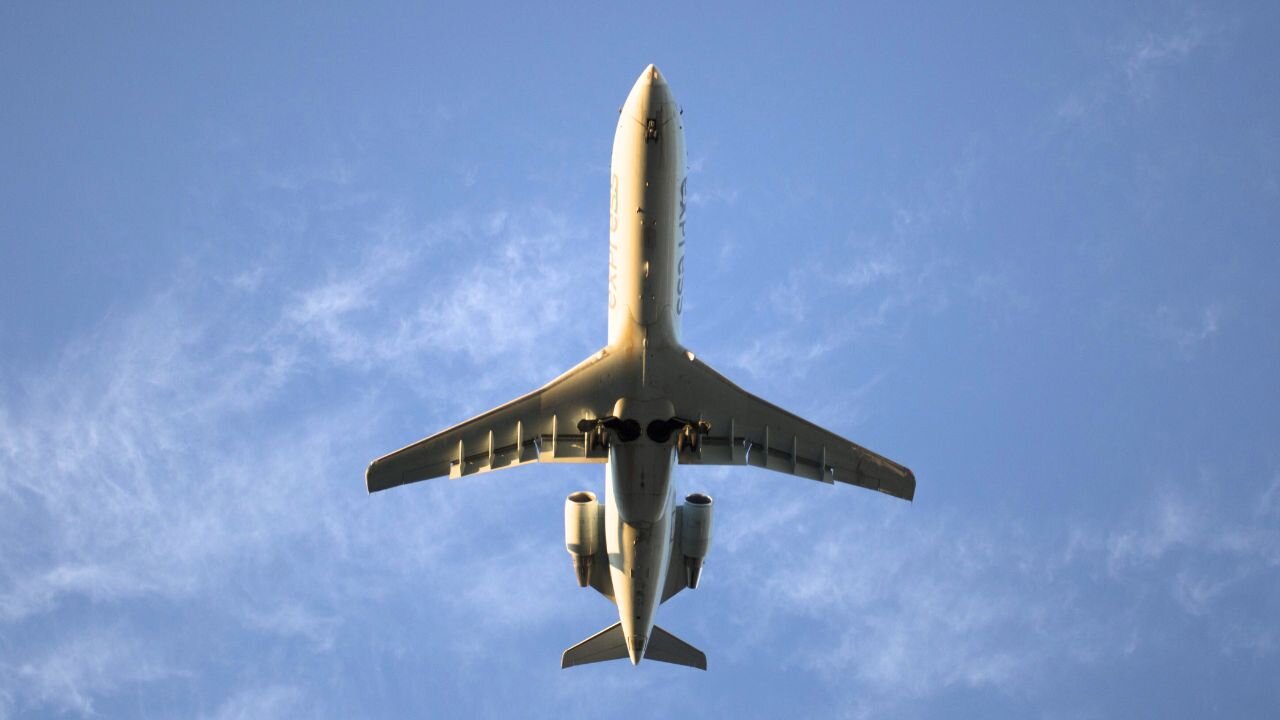Premium Only Content

From shopping to travel, here’s how Americans are planning for the holidays
It’s official, the top three markers that the holiday season is in full swing include hearing festive music on the radio (20%), seeing or hearing the first holiday ad (13%) and when it’s dark before 5 p.m. (11%).
A survey of 2,000 U.S. adults who celebrate the winter holidays revealed that almost one-third (31%) are commencing the season early and 67% started celebrating in one way or another as early as September.
Many Americans have already purchased (61%) and planned (55%) their gifts, as well as purchased decor (46%) or watched holiday movies (43%).
While 46% are embracing the holiday season earlier to get better deals, 45% simply want this to be the best holiday season yet.
Conducted by Talker Research on behalf of Motel 6, the survey explored planning timelines for this holiday season, and results found that one in ten are booking and budgeting later than in years past.
Nearly two-thirds of those Americans (64%) admitted that planning later for the holiday season is causing them additional stress.
Financial constraints (39%), the potential for better deals and prices (35%) as well as family dynamics (19%) are the leading factors in this delayed planning.
In years past, Americans planned their holiday winter travel an average of three weeks in advance.
“When it comes to getting into holiday season mode, it seems that many Americans’ hearts say ‘yes,’ but their wallets say ‘no.’ It’s no secret that this time of year brings joy and togetherness, but when paired with high-stress levels and costs, the reason for the season is diminished,” said Julie Arrowsmith, president and CEO of G6 Hospitality, parent company of Motel 6 and Studio 6. “Planning ahead and scouring for the best deals and discounts can alleviate some of this stress and encourage Americans to indulge in the best parts of the most wonderful time of the year.”
This year, 64% of Americans will be traveling for the holidays, with more than half of those (51%) getting to their destination by car rather than flying (13%).
Those travelers are planning to do so because their destination is close by (46%), they like driving (40%) or because it’s cheaper than flying (26%).
In fact, nearly two in five (39%) even have an “assigned seat” in the car when traveling with their family.
And at the end of the day, 80% of drivers believe that road trips to your destination make the whole travel experience more enjoyable.
Half of travelers (50%) note that their favorite holiday traditions include visiting or traveling to see family and friends.
Because of this, it’s no surprise that more than half (63%) of those traveling for holiday celebrations visit the same place year after year rather than somewhere new.
When traveling for the holidays, a little more than a quarter (26%) typically stay at a hotel or motel.
More than half of Americans otherwise usually stay at a family member’s (52%) home, but this can lead to challenging sleeping arrangements due to too many people in the house (30%).
In years past, crowded homes have also resulted in sleeping on the floor (26%) or making do with the couch (22%).
This may be why the average American seeks alone time less than a day (19.6 hours) into a family trip.
“There’s just something comforting and nostalgic about packing into the family car with a trunk filled with gifts and casseroles and road-tripping to your holiday celebrations. It’s no surprise we are seeing an uptick in this trusted travel choice this year given the current environment,” said Arrowsmith. “After all the fun and delicious meals, we know travelers want a reliable, affordable and comfortable place to rest, no matter the destination.”
Survey methodology:
Talker Research surveyed 2,000 Americans who celebrate a winter holiday; the survey was commissioned by Motel 6 and administered and conducted online by Talker Research between Sept. 18 to Sept. 20, 2024.
We are sourcing from a non-probability frame and the two main sources we use are:
● Traditional online access panels — where respondents opt-in to take part in online market research for an incentive
● Programmatic — where respondents are online and are given the option to take part in a survey to receive a virtual incentive usually related to the online activity they are engaging in
Those who did not fit the specified sample were terminated from the survey. As the survey is fielded, dynamic online sampling is used, adjusting targeting to achieve the quotas specified as part of the sampling plan.
Regardless of which sources a respondent came from, they were directed to an Online Survey, where the survey was conducted in English; a link to the questionnaire can be shared upon request. Respondents were awarded points for completing the survey. These points have a small cash-equivalent monetary value.
Cells are only reported on for analysis if they have a minimum of 80 respondents, and statistical significance is calculated at the 95% level. Data is not weighted, but quotas and other parameters are put in place to reach the desired sample.
Interviews are excluded from the final analysis if they failed quality-checking measures. This includes:
● Speeders: Respondents who complete the survey in a time that is quicker than one-third of the median length of interview are disqualified as speeders
● Open ends: All verbatim responses (full open-ended questions as well as other please specify options) are checked for inappropriate or irrelevant text
● Bots: Captcha is enabled on surveys, which allows the research team to identify and disqualify bots
● Duplicates: Survey software has “deduping” based on digital fingerprinting, which ensures nobody is allowed to take the survey more than once
It is worth noting that this survey was only available to individuals with internet access, and the results may not be generalizable to those without internet access.
-
 0:54
0:54
SWNS
2 days agoFantasy football struggle? Most give up before week 10
19 -
 32:10
32:10
MYLUNCHBREAK CHANNEL PAGE
1 day agoThe Gate of All Nations
42.9K22 -
 13:07
13:07
Sideserf Cake Studio
6 hours ago $0.09 earnedIS THIS THE MOST REALISTIC SUSHI CAKE EVER MADE?
506 -
 21:08
21:08
Clownfish TV
21 hours agoElon Musk Tells WotC to BURN IN HELL for Erasing Gary Gygax from DnD!
1.26K6 -
 48:22
48:22
PMG
2 hours ago"IRS Whistleblowers Speak Out on Biden Family with Mel K In-Studio"
811 -
 2:59
2:59
BIG NEM
4 hours agoLost in the Wrong Hood: Who Do I Check In With?
421 -
 1:29:32
1:29:32
I_Came_With_Fire_Podcast
14 hours ago"UFOs, Nukes, & Secrecy: Bob Salas on the 1967 Malmstrom Incident, UAPs, & Disclosure"
113K22 -
 1:57:05
1:57:05
The Quartering
8 hours agoElon Musk To BUY MSNBC & Give Joe Rogan A Spot, MrBeast Responds Finally To Allegations & Much More
104K85 -
 3:01:18
3:01:18
EXPBLESS
9 hours agoFirst Time Playing Extraction Shooters | *LIVE* Arena BreakOut | #RumbleTakeOver
87.4K7 -
 1:26:18
1:26:18
LumpyPotatoX2
8 hours agoArena Breakout: Infinite - #RumbleGaming
60.3K1